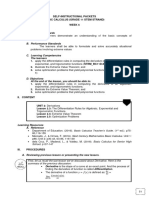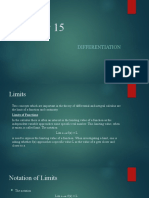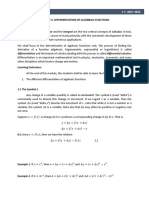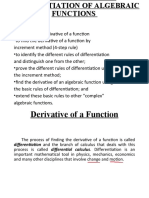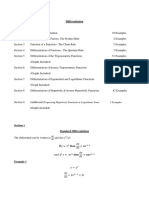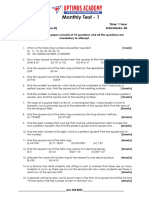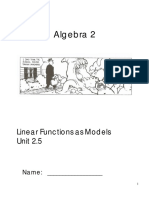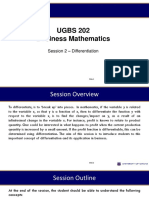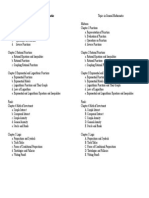0% found this document useful (0 votes)
103 views23 pagesDifferential Calculus (DC) : Welcome To The Presentation On
This document provides an introduction to differential calculus, including definitions, types, and concepts. It defines calculus as the technique for measuring rates of change with respect to infinitesimal changes in variables. It discusses the two main types - differential calculus and integral calculus. Differential calculus focuses on derivatives, which represent the rate of change of a function. The document provides examples of calculating derivatives using rules like the product rule and quotient rule. It also introduces concepts like the chain rule.
Uploaded by
JHCopyright
© © All Rights Reserved
We take content rights seriously. If you suspect this is your content, claim it here.
Available Formats
Download as PPT, PDF, TXT or read online on Scribd
0% found this document useful (0 votes)
103 views23 pagesDifferential Calculus (DC) : Welcome To The Presentation On
This document provides an introduction to differential calculus, including definitions, types, and concepts. It defines calculus as the technique for measuring rates of change with respect to infinitesimal changes in variables. It discusses the two main types - differential calculus and integral calculus. Differential calculus focuses on derivatives, which represent the rate of change of a function. The document provides examples of calculating derivatives using rules like the product rule and quotient rule. It also introduces concepts like the chain rule.
Uploaded by
JHCopyright
© © All Rights Reserved
We take content rights seriously. If you suspect this is your content, claim it here.
Available Formats
Download as PPT, PDF, TXT or read online on Scribd
/ 23







